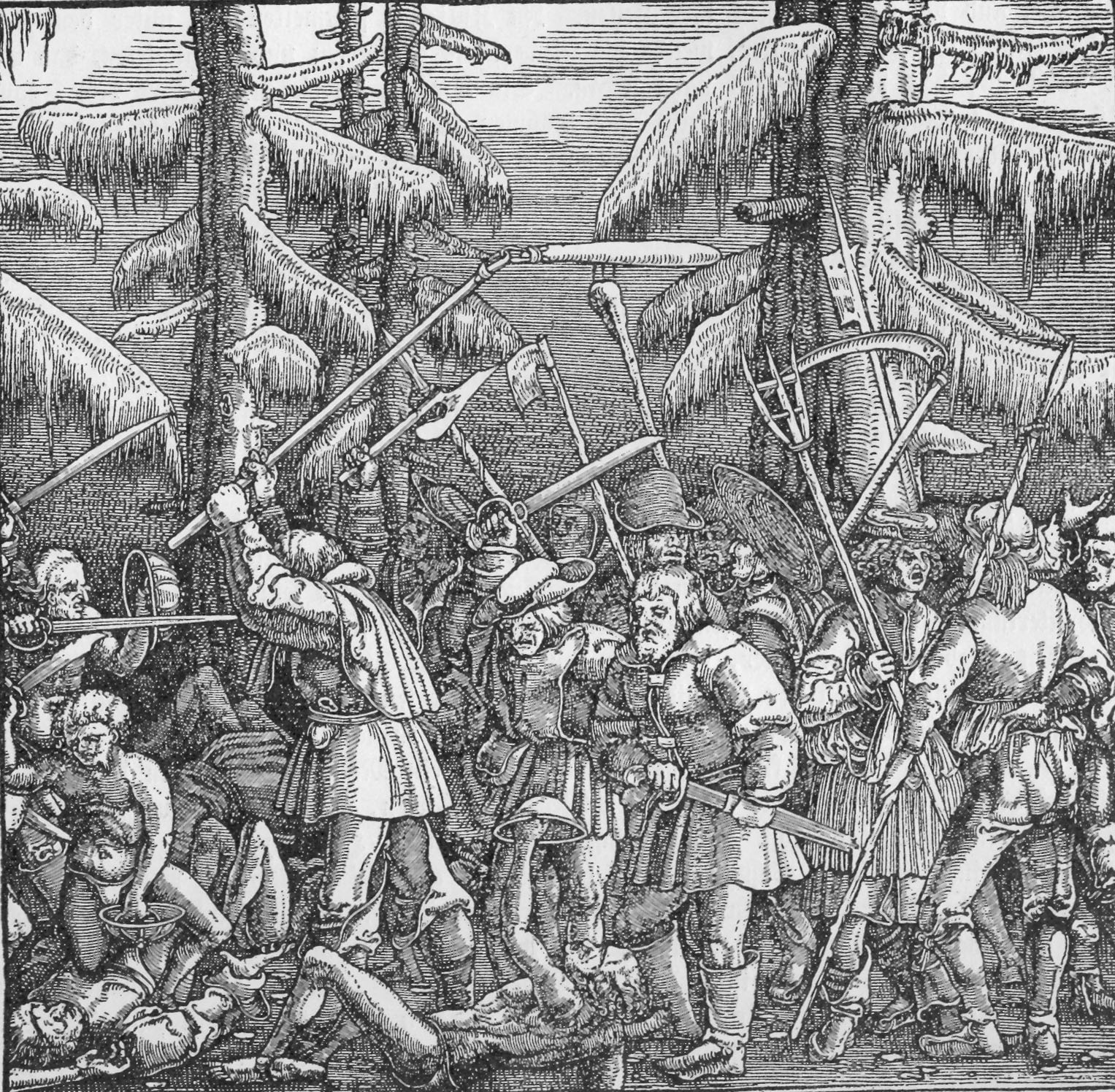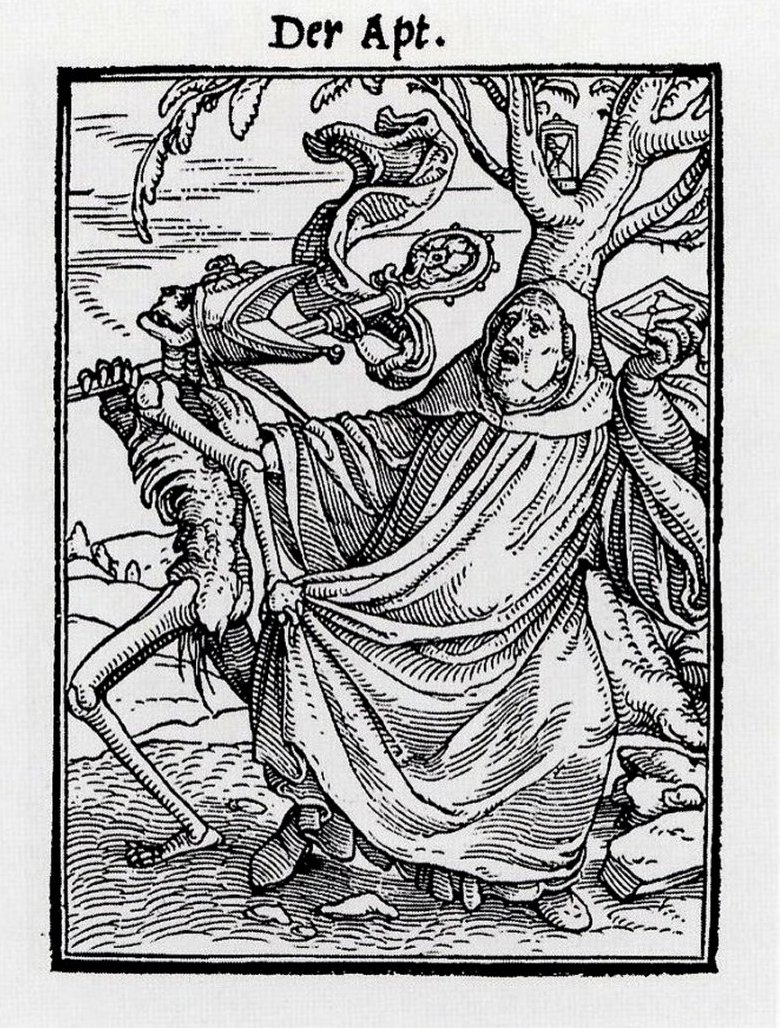Hans Lützelburger on:
[Wikipedia]
[Google]
[Amazon]

 Hans Lützelburger (died June 1526), also known as Hans Franck, was a German blockcutter ("formschneider") for
Hans Lützelburger (died June 1526), also known as Hans Franck, was a German blockcutter ("formschneider") for
''Hans Lützelburger and the Master N.H.''
JSTOR
* David Landau & Peter Parshall, ''The Renaissance Print'', Yale, 1996,
here
for 81 works.
including commentary, later images and copies by other artists. {{DEFAULTSORT:Lutzelburger, Hans Year of birth missing 1526 deaths German printmakers Woodcut cutters

 Hans Lützelburger (died June 1526), also known as Hans Franck, was a German blockcutter ("formschneider") for
Hans Lützelburger (died June 1526), also known as Hans Franck, was a German blockcutter ("formschneider") for woodcut
Woodcut is a relief printing technique in printmaking. An artist carves an image into the surface of a block of wood—typically with gouges—leaving the printing parts level with the surface while removing the non-printing parts. Areas tha ...
s, regarded as one of the finest of his day. He cut the blocks but as far as is known was not an artist himself. He is best known for his virtuoso work on 41 of the "superbly cut" series of tiny woodcuts of the '' Dance of Death'', designed by Hans Holbein the Younger, which Lützelburger left unfinished when he died.
He is known to have been active, and already well-established, in Augsburg from c. 1516, where he was working, and signing the reverse of blocks, under Jost de Negker
Jost de Negker (c. 1485–1544) was a cutter of woodcuts and also a printer and publisher of prints during the early 16th century, mostly in Augsburg, Germany. He was a leading "formschneider" or blockcutter of his day, but always to the design ...
, the other great blockcutter of the period, on the print projects for Maximilian I, Holy Roman Emperor
Maximilian I (22 March 1459 – 12 January 1519) was King of the Romans from 1486 and Holy Roman Emperor from 1508 until his death. He was never crowned by the pope, as the journey to Rome was blocked by the Venetians. He proclaimed himself E ...
involving Albrecht Dürer, Hans Burgkmair
Hans Burgkmair the Elder (1473–1531) was a German painter and woodcut printmaker.
Background
Hans Burgkmair was born in Augsburg, the son of painter Thomas Burgkmair. His own son, Hans the Younger, later became a painter as well. From 1488, Bu ...
and other artists. In 1522 his "first undoubted masterpiece", the ''Battle of Naked Men and Peasants'' by Master NH (possibly Nicholaus Hogenberg), was published, which in at least one edition carried an extra block in the margin below with his name as "FURMSCHNIDER" and the date in a tablet - a very unusual feature. This also includes portraits of Lützelburger and the artist, naked except for cloths covering their genitals, pointing to the tablet.
He was active from about 1522 in Basel
, french: link=no, Bâlois(e), it, Basilese
, neighboring_municipalities= Allschwil (BL), Hégenheim (FR-68), Binningen (BL), Birsfelden (BL), Bottmingen (BL), Huningue (FR-68), Münchenstein (BL), Muttenz (BL), Reinach (BL), Riehen (BS ...
(after a period in Mainz
Mainz () is the capital and largest city of Rhineland-Palatinate, Germany.
Mainz is on the left bank of the Rhine, opposite to the place that the Main joins the Rhine. Downstream of the confluence, the Rhine flows to the north-west, with Ma ...
), where he died in 1526. He and Holbein were contracted by the publisher Jakob Faber
Jacob Faber or Jakob Faber, also known as the "Master IF" from the monogram on his prints, was a formschneider ("block-cutter") of woodcuts and metalcuts, engraver, designer of decorative prints (alphabets, borders etc.) and publisher. Faber wa ...
for more than one series of Bible illustrations (for editions of Martin Luther
Martin Luther (; ; 10 November 1483 – 18 February 1546) was a German priest, theologian, author, hymnwriter, and professor, and Augustinian friar. He is the seminal figure of the Protestant Reformation and the namesake of Lutherani ...
's translation), as well as the ''Dance of Death''. He and Holbein also worked for the major publisher Johann Froben. He had only completed 41 of the scenes of the ''Dance of Death'' at his death. These were issued as prints in the early 1520s, sometimes wrongly called "proofs", and when they were published in book form in 1538, with added verses, they referred only to Lützelburger, it having apparently been forgotten that Holbein was involved. Later editions added other designs cut by others, probably not all by Holbein. The blocks formed part of his estate at his death.
He seems to have produced so much work in his last years at Basel that he may well have had assistants, although there is no documentation for this. He may also have been responsible for cutting the most impressive work of the Basel artist Urs Graf
Urs Graf (c. 1485 in Solothurn, Switzerland – possibly before 13 October 1528) was a Swiss Renaissance goldsmith, painter and printmaker (of woodcuts, etchings and engravings), as well as a Swiss mercenary. He only produced two etchings, one ...
, his series of 16 white-line woodcut
Woodcut is a relief printing technique in printmaking. An artist carves an image into the surface of a block of wood—typically with gouges—leaving the printing parts level with the surface while removing the non-printing parts. Areas that ...
s of ''Standardbearers''.Bartrum, 218-9,
Notes
References
* Bartrum, Giulia, ''German Renaissance Prints, 1490–1550''; British Museum Press, 1995,''Hans Lützelburger and the Master N.H.''
Campbell Dodgson
Campbell Dodgson, CBE DLitt Hon RE (13 August 1867 – 11 July 1948) was a British art historian and museum curator. He was the Keeper of Prints and Drawings at the British Museum in 1912–32.
Biography Student
Campbell Dodgson was the eighth ...
, The Burlington Magazine
''The Burlington Magazine'' is a monthly publication that covers the fine and decorative arts of all periods. Established in 1903, it is the longest running art journal in the English language. It has been published by a charitable organisation s ...
, Vol. 10, No. 47 (Feb., 1907), pp. 319–322JSTOR
* David Landau & Peter Parshall, ''The Renaissance Print'', Yale, 1996,
External links
* * *British Museum
The British Museum is a public museum dedicated to human history, art and culture located in the Bloomsbury area of London. Its permanent collection of eight million works is among the largest and most comprehensive in existence. It docum ...
, Search on Hans Lützelburgehere
for 81 works.
including commentary, later images and copies by other artists. {{DEFAULTSORT:Lutzelburger, Hans Year of birth missing 1526 deaths German printmakers Woodcut cutters